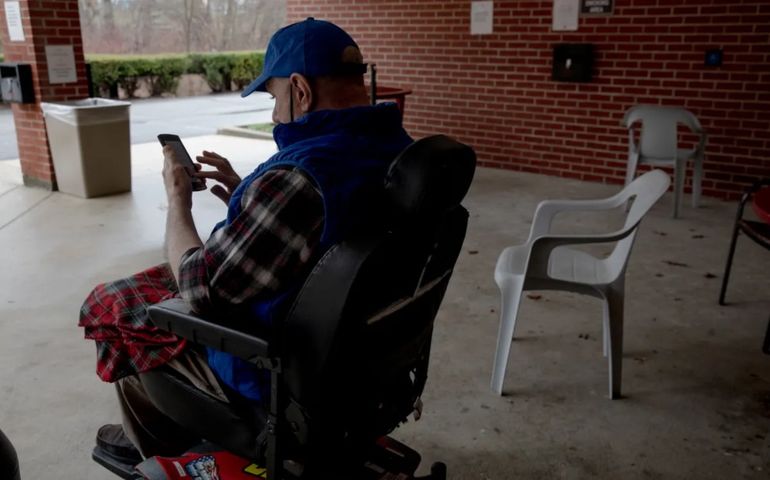Processing Your Payment
Please do not leave this page until complete. This can take a few moments.
-
News
-
Editions
-
- Lists
-
Viewpoints
-
HBJ Events
-
Event Info
- 2024 Economic Outlook Webinar Presented by: NBT Bank
- Best Places to Work in Connecticut 2024
- Top 25 Women In Business Awards 2024
- Connecticut's Family Business Awards 2024
- What's Your Story? A Small Business Giveaway 2024 Presented By: Torrington Savings Bank
- 40 Under Forty Awards 2024
- C-Suite and Lifetime Achievement Awards 2024
- Connecticut's Health Care Heroes Awards 2024
-
-
Business Calendar
-
Custom Content
- News
-
Editions
View Digital Editions
Biweekly Issues
- April 29, 2024
- April 15, 2024
- April 1, 2024
- March 18, 2024
- March 4, 2024
- February 19, 2024
- February 5, 2024
- January 22, 2024
- January 8, 2024
- + More
Special Editions
- Lists
- Viewpoints
-
HBJ Events
Event Info
- View all Events
- 2024 Economic Outlook Webinar Presented by: NBT Bank
- Best Places to Work in Connecticut 2024
- Top 25 Women In Business Awards 2024
- Connecticut's Family Business Awards 2024
- What's Your Story? A Small Business Giveaway 2024 Presented By: Torrington Savings Bank
- 40 Under Forty Awards 2024
- C-Suite and Lifetime Achievement Awards 2024
- Connecticut's Health Care Heroes Awards 2024
Award Honorees
- Business Calendar
- Custom Content
State noncommittal to nursing homes’ request for more money
 YEHYUN KIM / CTMIRROR.ORG
Gregory Brooks, pictured here in March 2022, was moved out of a nursing home that was shut down. "Too many patients and not enough nurses, not enough staff. That's the problem," he said.
YEHYUN KIM / CTMIRROR.ORG
Gregory Brooks, pictured here in March 2022, was moved out of a nursing home that was shut down. "Too many patients and not enough nurses, not enough staff. That's the problem," he said.
State officials were noncommittal this month when responding to a voluminous request for funding from the nursing home industry, which is struggling to staff its facilities and keep up with soaring inflation.
The nursing homes, stung by chronic staffing issues and wage pressure, had asked for $193 million more in aid to help sustain struggling elder care facilities. The state’s social services budget allows for an additional $28 million. Leaders at the department did not immediately agree to send more money to the sector.
“We look forward to continued discussions as we work to improve the lives of Connecticut nursing home residents,” wrote Andrea Barton Reeves, commissioner of the state Department of Social Services.
But lawmakers and advocates say they want to see greater transparency on nursing home spending before signing off on such a request, arguing the state has already provided the industry with millions of dollars in extra funding during COVID.
Matthew Barrett, president and CEO of the Connecticut Association of Health Care Facilities, and Mag Morelli, head of LeadingAge Connecticut, which together represent 186 of Connecticut’s 205 nursing homes, wrote in a Nov. 30 letter to the state that there is an “urgent need” for additional funding.
“We are writing to you once more to ask you to provide additional financial relief to our state’s skilled nursing facilities as they endeavor to provide quality care during this now elongated and unrelenting environment of double-digit inflation and increasing staffing costs,” they wrote.
From February 2020 to December 2022, the nursing home industry lost 210,000 jobs nationally, and staffing fell to levels not seen since 1994, officials with the American Health Care Association and National Center for Assisted Living said.
Facilities added an average of 3,700 jobs per month over the last nine months. At the current pace, staffing would not return to pre-pandemic levels until 2027, AHCA noted.
In Connecticut, understaffing has led to widespread problems in some facilities. The CT Mirror reported that Athena, one of the largest long-term care providers in the state, has come under the scrutiny of officials in three New England states after receiving consistent complaints about conditions in its nursing homes.
Athena is facing numerous lawsuits alleging it owes money to temporary employment agencies that provided workers to short-staffed facilities. The company is also accused of failing to pay nearly $6 million in employee health benefits and has faced consent orders at facilities in Connecticut, Massachusetts and Rhode Island.
Residents of some Athena homes complained of being stranded in bed for long stretches of time, missing meals or medications and being unable to attend daily activities. Family members described their loved ones as unkempt during visits. Residents have reported regularly missing showers and haircuts.
In some homes, residents say they’ve seen a single nursing aide assigned to 20 people. A typical ratio to ensure good care is one worker to every eight or 10 people, the state’s long term care ombudsman has said.
The state Department of Public Health recently placed one of Athena’s facilities, the Newtown Rehabilitation and Health Care Center, under immediate jeopardy because of troubling conditions found when inspectors visited the building. Immediate jeopardy occurs when violations cause or are likely to cause serious harm or death. Athena fixed the problems in less than two days, and the order was lifted.
But nursing home officials and state investigators say Athena’s problems are not isolated and that staffing shortages and cost increases are affecting care in many facilities.
Barbara Cass, chief of DPH’s health care quality and safety branch, said the department issued four immediate jeopardy orders across Connecticut nursing homes during the last quarter from Mystic to Windsor.
“It’s really the staffing,” Morelli said of the funding request. “And it’s not just direct care staff, all staff costs have gone up. There’s been very real pressure on the cost side and not getting [enough] on the revenue side.”
Legislators, advocates call for more transparency
Lawmakers and advocates acknowledge the situation in nursing homes is dire and must be addressed. But while some are supportive of sending additional funds, many say greater transparency is needed to show exactly how managers are spending the money.
“There’s been no accountability for where this money went,” said Mairead Painter, Connecticut’s long-term care ombudsman. “[The state has] given them lots of dollars since COVID — lots of lots of money. Where did this money go? Because it’s not going to the staff and the residents that we can see.”
During the first year of the pandemic, the state announced more than $90 million for nursing homes to help deal with plunging occupancy, staffing costs and protective gear, among other expenses.
Still reeling from the worst of COVID, the state in 2021 extended nursing homes a temporary 10% Medicaid rate hike that sent another $86 million to the facilities between July 2021 and March 2022. And nursing homes and Gov. Ned Lamont’s administration averted a major caregivers’ strike in spring 2021 with a significant package of wage and benefit enhancements. The state bolstered Medicaid rates to send an extra $125 million to $130 million annually to help cover labor costs.
Facility operators are required to submit annual cost reports that feature revenue, expenditure and balance sheet information. But Painter and others are calling for deeper explanations of the spending.
As part of her legislative agenda this year, Painter asked lawmakers to mandate that nursing home managers turn in narrative summaries of expenditures, with explanations of many individual costs. She also recommended that the social services commissioner make the reports easily identifiable on the state website and include comparisons between the homes’ spending.
In addition, Painter asked legislators to pass a bill forcing nursing homes to halt admissions if they don’t meet the minimum staffing requirement of three hours of direct care per resident per day.
Officials at the AARP in Connecticut support the transparency measures.
“It’s historically been too easy for the industry to say, ‘We need more money,’” said Anna Doroghazi, associate state director for advocacy and outreach. “We’ve seen that going on for years and years, and we have increased rates. … What is harder to see in the cost reports and data that’s available is at the end of the day, who’s benefiting the most? Is it residents? Is it workers? Is it facility owners?
“The concern we have as advocates is there are a lot of clues that seem to indicate someone other than residents are the ultimate beneficiaries here.”
As the legislative session gets underway, lawmakers have signaled they will craft bills to boost accountability.
“A key question for us is, ‘Where is the money going if it isn’t going to pay for more staff?’” said Jillian Gilchrest, a West Hartford Democrat who is co-chair of the Human Services Committee. “Before we can take any policy steps, there has to be some funding transparency from the providers.”
“It’s hard enough to attract people to do these difficult jobs, and we know they aren’t adequately paid in many cases,” she said. “So we need to make sure if we end up raising rates, that it is going to pay the staff.”
Considerable surplus
Given that the state is projecting a $3.2 billion budget surplus, Barrett said, nursing home leaders are keeping the lines of communication open with officials at DSS.
“Dynamics are different in a year when there’s a considerable surplus,” he said.
At issue for the nursing homes are Medicaid rates that haven’t been adjusted to compensate for inflation since 2019. The legislature and social services officials launched a three-year process in 2021 to begin to correct that problem.
But that became far more challenging when inflation rates hit a 40-year high. The Consumer Price Index topped 8% for most of the last calendar year and hit 9% in June. By comparison, the CPI was just 5.4% when the legislature adjourned in June 2021.
By Nov. 30, when Morelli and Barrett made the funding request, the inflationary correction needed was 16.2%. Legislators, however, gave DSS discretion to limit rate growth based on available resources. This “stop-loss” provision effectively was used to cap rate increases far below the recommended inflationary adjustment.
Connecticut nursing homes receive, on average, $282 per patient per day from Medicaid. Based on that, a 16.2% adjustment would require the state to boost the average facility’s rate by $45 per patient. The stop-loss provision capped the inflationary adjustment at $6.50 per patient per day — one-seventh of what the industry says it needs to tread water financially.
“Nursing homes are losing ground,” Barrett said in an interview. “Generally, nursing facilities will continue to be disadvantaged and undermined in their ability to hire additional staff. … And that will mean there will continue to be issues related to nursing homes’ ability to accept hospital admissions.”
Crisis situation
Jane Garibay, a Democrat from Windsor, has received a flood of emails, texts and calls from constituents with loved ones in nursing homes.
“What I’m hearing is we’re in crisis,” said Garibay, a co-chair of the Aging Committee. “I get pictures of their loved ones with whatever’s happening to them. I’ve gotten pictures of bedsores. I’ve gotten videos of their loved ones in pain.
“We have to work on legislation to protect our seniors. It seems to me like it’s a forgotten group. We rightfully put a ton of money into our children, they are our future. But I feel we’re not treating our elderly with the dignity they deserve.”
Senate Minority Leader Kevin Kelly, D-Stratford, suggested the General Assembly consider an increase in the Medicaid reimbursement in the next state budget to help bolster staff.
Facility leaders are not opposed to greater accountability, Barrett said.
“The sector is open to even more transparency,” he said. “We believe Connecticut’s system is one of the most transparent in the nation, and we’re open to ideas where there could be greater transparency.”
Recently, the Connecticut Association of Health Care Facilities donated $25,000 to Lamont’s inaugural ball, a glitzy event kicking off the governor’s second term, headlined by Kevin Bacon’s band, The Bacon Brothers.
Barrett said it was not the first time the organization had donated to an inaugural ball. When spread across the 151 nursing homes it represents, he said no single facility contributed more than $200 a piece — the price of a ticket.
“We were able to get to the $25,000 figure because of our important presence throughout the state,” he said. “Helping to defray the cost of the governor’s ball at a $25,000 amount – which is not an insignificant amount – is quite remarkably different [however] from the inflationary adjustment … in excess of $100 million.”
CT Mirror Reporter Keith M. Phaneuf contributed to this story.

2022 Giving Guide
This special edition informs and connects businesses with nonprofit organizations that are aligned with what they care about. Each nonprofit profile provides a crisp snapshot of the organization’s mission, goals, area of service, giving and volunteer opportunities and board leadership.
Learn more
Subscribe
Hartford Business Journal provides the top coverage of news, trends, data, politics and personalities of the area’s business community. Get the news and information you need from the award-winning writers at HBJ. Don’t miss out - subscribe today.
Subscribe
2024 Book of Lists
Delivering Vital Marketplace Content and Context to Senior Decision Makers Throughout Greater Hartford and the State ... All Year Long!
Read Here-
2022 Giving Guide
This special edition informs and connects businesses with nonprofit organizations that are aligned with what they care about. Each nonprofit profile provides a crisp snapshot of the organization’s mission, goals, area of service, giving and volunteer opportunities and board leadership.
-
Subscribe
Hartford Business Journal provides the top coverage of news, trends, data, politics and personalities of the area’s business community. Get the news and information you need from the award-winning writers at HBJ. Don’t miss out - subscribe today.
-
2024 Book of Lists
Delivering Vital Marketplace Content and Context to Senior Decision Makers Throughout Greater Hartford and the State ... All Year Long!
ABOUT
ADVERTISE
NEW ENGLAND BUSINESS MEDIA SITES
No articles left
Get access now
In order to use this feature, we need some information from you. You can also login or register for a free account.
By clicking submit you are agreeing to our cookie usage and Privacy Policy
Already have an account? Login
Already have an account? Login
Want to create an account? Register
Get access now
In order to use this feature, we need some information from you. You can also login or register for a free account.
By clicking submit you are agreeing to our cookie usage and Privacy Policy
Already have an account? Login
Already have an account? Login
Want to create an account? Register






0 Comments